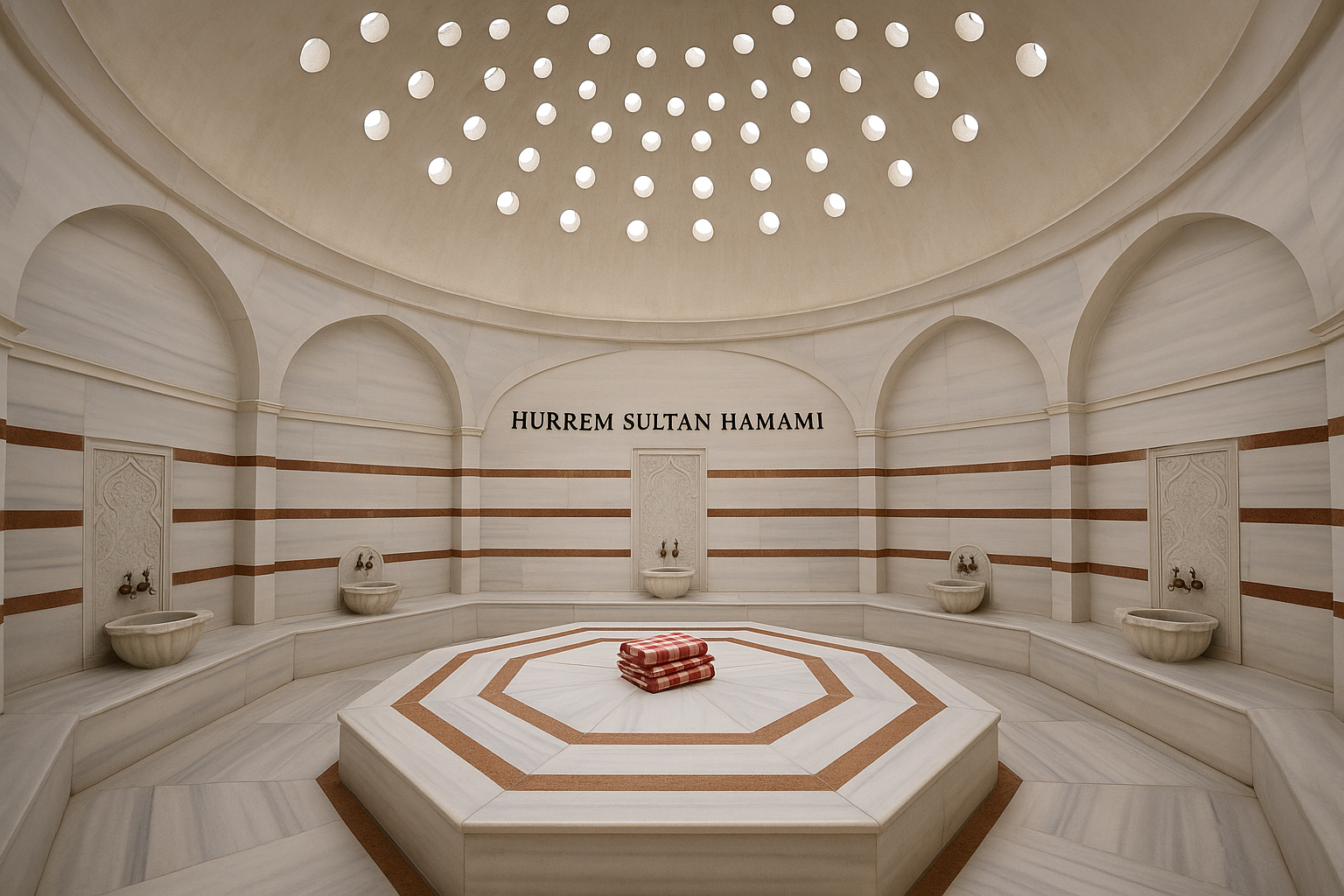
Hürrem Sultan Hamamı (Hurrem Sultan Hammam)
HISTORICAL BACKGROUND AND SIGNIFICANCE
Hürrem Sultan Hamamı, also known as the Hurrem Sultan Bathhouse, is a significant historical site located in the heart of Istanbul, near the iconic Süleymaniye Mosque. Commissioned by Hürrem Sultan, the wife of Sultan Süleyman the Magnificent, in the 16th century, this hamam (Turkish bath) was designed by the renowned architect Mimar Sinan, who is celebrated for his contributions to Ottoman architecture. Built in 1556, the hamam served not only as a place for bathing but also as a social hub for the community, reflecting the importance of hygiene and social interaction in Ottoman culture.
The bathhouse was part of a larger complex that included a mosque, a school, and a soup kitchen, highlighting the multifaceted role of such structures in Ottoman society. Hürrem Sultan, originally known as Roxelana, was a powerful figure in her own right, and her influence extended beyond the palace, making this hamam a symbol of her legacy and the grandeur of the Ottoman Empire.
ARCHITECTURAL FEATURES AND DESIGN ELEMENTS
The architectural design of Hürrem Sultan Hamamı is a testament to the ingenuity of Mimar Sinan. The hamam is characterized by its elegant domes, intricate tile work, and spacious interiors. The main bathing area, or 'soğukluk', features a large central dome that allows natural light to flood the space, creating a serene atmosphere. The use of marble in the construction not only adds to the aesthetic appeal but also serves practical purposes, as it helps maintain the warmth of the water.
The hamam is divided into two sections: one for men and one for women, ensuring privacy and comfort for all visitors. The women's section is adorned with beautiful stained glass windows that filter light in a colorful display, enhancing the tranquil environment. The intricate mosaics and calligraphy that decorate the walls reflect the artistic traditions of the time, showcasing the blend of functionality and beauty that defines Ottoman architecture.
CULTURAL AND RELIGIOUS IMPORTANCE
In Ottoman culture, the hamam was more than just a place for bathing; it was a vital social institution. It served as a venue for women to gather, socialize, and discuss community matters. The rituals associated with bathing, including scrubbing and massage, were seen as essential for both physical and spiritual cleansing. The hamam also played a role in various life events, such as weddings and childbirth, where bathing rituals were integral to the celebrations.
Religiously, the hamam was a space that promoted cleanliness, which is a significant aspect of Islamic practice. The act of purification before prayer is emphasized in Islam, making the hamam an important facility for the community. Hürrem Sultan Hamamı thus stands as a monument to the cultural and religious practices of the Ottoman Empire, embodying the values of cleanliness, community, and social interaction.
VISITOR EXPERIENCE AND WHAT TO EXPECT
Visiting Hürrem Sultan Hamamı offers a unique opportunity to immerse oneself in the traditional Turkish bath experience. Upon arrival, visitors are greeted by the warm ambiance and the inviting scent of essential oils. The staff, dressed in traditional attire, guide guests through the various stages of the bathing process, which typically includes a steam session, a body scrub, and a relaxing massage.
The hamam is equipped with modern amenities while maintaining its historical charm. Visitors can expect a serene environment, where the sounds of water and soft music create a calming atmosphere. It is advisable to allocate at least 1 to 2 hours for the complete experience, allowing time to relax and enjoy the therapeutic benefits of the treatments.
INTERESTING FACTS AND ANECDOTES
1. Hürrem Sultan, the namesake of the hamam, was not only a powerful political figure but also a patron of the arts and architecture. Her influence led to the construction of several significant buildings in Istanbul, including the famous Haseki Sultan Mosque. 2. The hamam has undergone various renovations over the centuries, but efforts have been made to preserve its original architectural features, ensuring that visitors can still experience the historical essence of the space. 3. There is a popular belief that bathing in the hamam can bring good luck and prosperity, making it a favored spot for locals and tourists alike.
PRACTICAL VISITING INFORMATION
- **Hours**: Hürrem Sultan Hamamı is open daily from 9:00 AM to 10:00 PM. It is advisable to check for any changes in hours during holidays or special events. - **Best Times to Visit**: To avoid crowds, it is recommended to visit during weekdays, especially in the morning or early afternoon. Weekends tend to be busier, as both locals and tourists flock to the hamam. - **Tips**: - Make a reservation in advance, especially during peak tourist seasons, to ensure availability. - Bring your own swimsuit or purchase a traditional pestemal (Turkish towel) on-site for a more authentic experience. - Hydrate before and after your visit, as the heat can be intense. - Consider trying additional treatments, such as aromatherapy or skin care, for a more indulgent experience.
In conclusion, Hürrem Sultan Hamamı is not just a bathhouse; it is a cultural landmark that encapsulates the essence of Ottoman life. From its historical significance to its architectural beauty and the immersive visitor experience, the hamam offers a glimpse into a world where hygiene, community, and tradition intertwine beautifully.